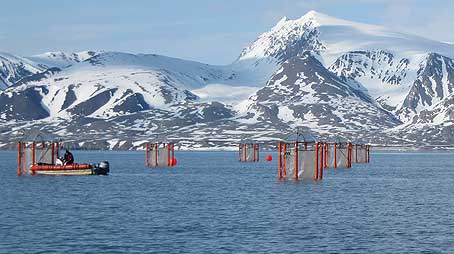| SEARCH |
-

Nov 17, 2015
Reflections on a three-decade legacy
The International Geosphere-Biosphere Programme (IGBP) will come to a close at t...
-
Nov 17, 2015
Use of and access to content on this website
Text and images produced by IGBP in house are free to use with appropriate credi...
-
Nov 12, 2015
Bella Gaia performance and panel discussion to mark IGBP's closure
A musical performance by Bella Gaia will celebrate the achievements and legacy o...
-

Towards Future Earth:
evolution or revolution?
During its three decades of existence, the International Geosphere-Biosphere Pro...
-
A personal note on IGBP and the social sciences
Humans are an integral component of the Earth system as conceptualised by IGBP. João Morais recalls key milestones in IGBP’s engagement with the social sciences and offers some words of advice for Future Earth.
-
IGBP and Earth observation:
a co-evolution
The iconic images of Earth beamed back by the earliest spacecraft helped to galvanise interest in our planet’s environment. The subsequent evolution and development of satellites for Earth observation has been intricately linked with that of IGBP and other global-change research programmes, write Jack Kaye and Cat Downy .
-
Deltas at risk
Around 500 million people worldwide live on deltas, but many of the world's deltas are sinking due ...
-
Climate change: the state of the science
A new data visualization released on the first day of the plenary negotiations at the UNFCCC’s clima...
-
Climate Change:
the State of the Science
Videos now online from the Stockholm public forum to mark the launch of the IPCC's climate report, 2...

Standard methods
Earth System science often requires a large number of process or case studies at multiple sites under different conditions around the globe, and their subsequent comparison and integration. An essential component in this approach is the development and use of standard research methods.
Downloads:
IGBP Vision (pdf, 207.4 kB)
(pdf, 207.4 kB)
IGBP Constitution (pdf, 96.1 kB)
(pdf, 96.1 kB)
An example of the development of standard methods is in ocean acidification. IGBP's marine projects are contributing to leadership in the international coordination of ocean acidification research. Scientists involved in these projects have developed Ocean acidification: a guide to best practices for ocean acidification research and data reporting (produced by the European Ocean Acidification research project, EPOCA).
Another example of a standard method developed and promoted by IGBP is the LOICZ biogeochemical budgeting method for coastal seas, motivated by the inherent difficulty of studying global biogeochemical fluxes in coastal seas due to the large heterogeneity of these areas.
The method provides estimates of carbon, nitrogen and phosphorus fluxes into and out of the coastal zone, including the emission of gases to the atmosphere. Because nutrients undergo reactions in coastal waters, budgeting is complicated. The method therefore relies on measuring fluxes for one nutrient species (usually phosphorus) and applying scaling ratios to estimate the fluxes of other nutrient species.
Thanks to this method, cross-site comparisons have been carried out from local lagoons and estuaries to the large East China Sea; from pristine sites to sites degraded by high anthropogenic nutrient loadings; from shallow water bodies to water bodies hundreds of meters in depth; and from tropical to arctic environments.
IGBP closed at the end of 2015. This website is no longer updated.
-

Global Change Magazine No. 84
This final issue of the magazine takes stock of IGBP’s scientific and institutional accomplishments as well as its contributions to policy and capacity building. It features interviews of several past...
-

Global Change Magazine No. 83
This issue features a special section on carbon. You can read about peak greenhouse-gas emissions in China, the mitigation of black carbon emissions and the effect of the 2010-2011 La Niña event on gl...
-
INTERGOVERNMENTAL PANEL ON CLIMATE CHANGE:
How green is my future?
UN panel foresees big growth in renewable energy, but policies will dictate just how big.
-
UK:
'The Anthropocene: a new epoch of geological time?'
Royal Society, Philosphical Transactions A




















